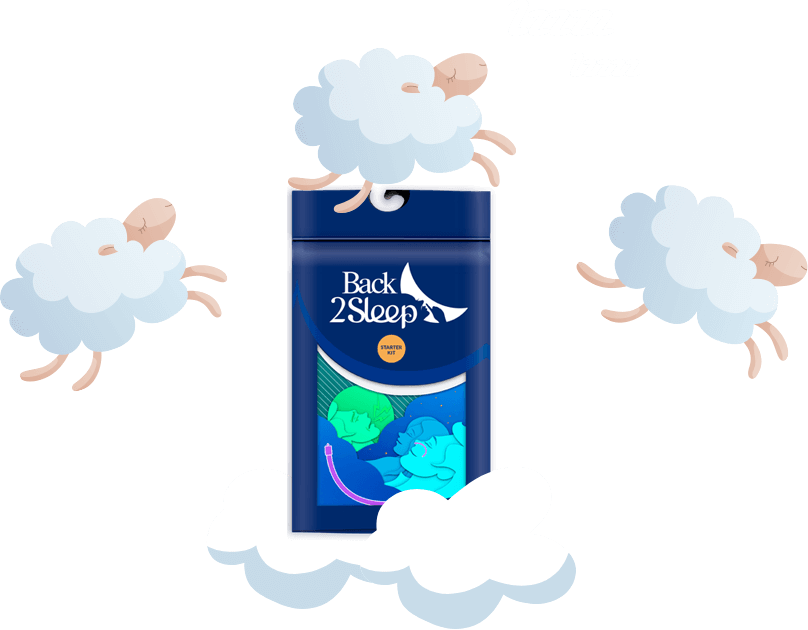Sleep Apnea and Diet: Everything You Need to Know to Transform Your Sleep
Discover the powerful connection between what you eat and how you sleep—backed by clinical research and real success stories
Sleep apnea and diet are intrinsically linked—what you eat directly impacts breathing quality, inflammation levels, and sleep architecture throughout the night. If you're struggling with obstructive sleep apnea (OSA), understanding this connection could be your breakthrough to better sleep, as dietary modifications have been shown to reduce apnea severity by up to 50% when combined with weight loss strategies. This comprehensive guide reveals the foods that worsen sleep apnea symptoms, the nutrients that promote deeper sleep, and evidence-based meal planning strategies that complement medical treatments like CPAP therapy or innovative nasal stents from Back2Sleep.

Critical Research Finding: Studies demonstrate that losing just 10-15% of body weight can result in a 30-50% reduction in sleep apnea severity. Every 1% of weight loss corresponds to approximately a 3% improvement in the Apnea-Hypopnea Index (AHI).
The Diet-Sleep Apnea Connection: Powerful Statistics
Clinical research from the Multi-Ethnic Study of Atherosclerosis (MESA) and National Health and Nutrition Examination Survey (NHANES) reveals that individuals with the healthiest dietary patterns—measured by the Healthy Eating Index (HEI)—have 28% lower odds of being at high risk for sleep apnea compared to those with the poorest diet quality. Conversely, those consuming highly inflammatory diets show 55% greater OSA risk.
How Diet Affects Sleep Apnea: The Science Explained
The relationship between nutrition and sleep apnea operates through multiple interconnected mechanisms that go far beyond simple weight gain. Understanding these pathways empowers you to make strategic dietary choices that directly address the root causes of breathing disruption.
Weight and Airway Obstruction
Excess body weight, particularly fat deposits around the neck and throat, physically narrows the upper airway during sleep. When you lie down, gravity causes these tissues to collapse inward, blocking the passage of air. Visceral adiposity (belly fat) also plays a role by putting pressure on the diaphragm, reducing lung capacity and making breathing more labored throughout the night.

Inflammation and Airway Sensitivity
Certain foods trigger systemic inflammation that affects airway tissues. The Dietary Inflammatory Index (DII) measures the inflammatory potential of your overall diet. High-DII diets—characterized by processed meats, refined carbohydrates, and trans fats—increase inflammatory markers like C-reactive protein and interleukins. These compounds cause swelling in the throat tissues, making airways more prone to collapse during sleep.
Sleep Architecture Disruption
Diet quality directly impacts sleep stages, particularly slow-wave sleep (N3 stage) and REM sleep. Research shows that N3 sleep duration partially explains the association between poor diet and OSA severity. Individuals consuming diets high in saturated fats and low in fiber experience more frequent sleep arousals and less restorative deep sleep, creating a vicious cycle where poor sleep drives unhealthy food choices.
Research Insight: The MESA study found that N3 sleep explained 9.25% of the association between red/processed meat intake and OSA severity. Better diet quality preserves the deep sleep stages crucial for physical restoration.
Hormonal Dysregulation
Sleep apnea disrupts appetite-regulating hormones leptin and ghrelin, independent of obesity. Fragmented sleep increases ghrelin (hunger hormone) and decreases leptin (satiety hormone), driving increased calorie consumption—particularly of high-sugar, high-fat comfort foods. This hormonal imbalance creates a feedback loop where OSA worsens dietary choices, which in turn worsen OSA severity.
Understanding Sleep Apnea9 Foods and Habits That Worsen Sleep Apnea Symptoms
Avoiding these dietary culprits represents your first line of defense against escalating OSA symptoms. Strategic elimination of inflammatory and mucus-producing foods can produce noticeable improvements within days.
🥩 Red & Processed Meats
High in saturated fats and advanced glycation end products (AGEs), these trigger inflammation and oxidative stress. Studies show individuals in the highest quartile of red meat intake are 3x more likely to have severe OSA.
🍰 Refined Sugars & Carbs
High-glycemic foods cause rapid blood sugar spikes and crashes, disrupting sleep cycles. They promote weight gain, inflammation, and energy instability that worsens daytime fatigue from OSA.
🧀 Full-Fat Dairy Products
Whole milk, cheese, and cream increase mucus production in the throat and nasal passages, compounding airway obstruction. The casein protein in dairy can be particularly problematic for mucus-sensitive individuals.
🍺 Alcohol (Especially Evening)
Alcohol relaxes upper airway muscles, dramatically increasing collapse likelihood. Even moderate consumption 2-3 hours before bed can double apnea frequency and severity throughout the night.
Immediate Action: Start by eliminating just one category—many patients report noticeable improvement by removing evening alcohol alone. Gradually phase out other problematic foods over 2-4 weeks for sustainable change.
7 Powerful Foods That Help Reduce Sleep Apnea Symptoms
Strategic food choices provide anti-inflammatory compounds, essential nutrients, and satiety signals that naturally support healthier weight and improved breathing during sleep.

1. Omega-3 Rich Fatty Fish
Salmon, mackerel, sardines, and herring contain powerful anti-inflammatory omega-3 fatty acids (EPA and DHA) that reduce airway inflammation and improve overall sleep quality. Omega-3s also boost melatonin production, the hormone regulating sleep-wake cycles. Aim for 2-3 servings weekly of fatty fish.
2. High-Fiber Fruits & Vegetables
A landmark 2016 study in the Journal of Clinical Sleep Medicine found that higher fiber intake correlates with deeper, more restorative sleep and fewer arousals. Colorful produce provides antioxidants (vitamins C and E) that combat oxidative damage from intermittent hypoxemia. Prioritize:
- Melatonin-rich options: Tart cherries, asparagus, corn, broccoli, tomatoes
- Antioxidant powerhouses: Berries, leafy greens, bell peppers
- Fiber-dense choices: Apples, pears, Brussels sprouts, carrots
3. Whole Grains (Not Refined)
Whole wheat, brown rice, quinoa, oats, and barley provide complex carbohydrates that stabilize blood sugar throughout the night. Unlike refined grains that cause glucose spikes and crashes, whole grains release energy slowly. Many are fortified with folic acid, a B-vitamin showing protective effects against OSA in epidemiological studies. The fiber content promotes satiety, supporting weight management efforts.
4. Lean Proteins
Chicken breast, turkey, fish, legumes, and plant-based proteins support muscle maintenance during weight loss—critical because you want to lose fat, not lean tissue. Adequate protein (0.8-1.0g per kg body weight) preserves metabolic rate and promotes fat oxidation. These sources provide tryptophan, a precursor to serotonin and melatonin production.
5. Low-Fat Dairy Products
Skim milk, low-fat yogurt, and reduced-fat cheese deliver calcium, protein, and vitamin D without the mucus-promoting effects of full-fat versions. Greek yogurt provides probiotics that may reduce systemic inflammation. The calcium and magnesium in dairy support muscle relaxation.
6. Magnesium-Rich Foods
Leafy greens, pumpkin seeds, almonds, black beans, and dark chocolate (70%+ cacao) provide magnesium, a mineral supporting over 300 biochemical reactions. Magnesium promotes muscle relaxation—including airway muscles—and melatonin production. Population studies show magnesium deficiency correlates with poor sleep quality.
7. Tryptophan Sources
Beyond turkey, excellent tryptophan sources include pumpkin seeds, eggs, tofu, salmon, nuts, and oats. This amino acid converts to serotonin and subsequently melatonin, facilitating sleep initiation and maintenance. Consuming tryptophan with complex carbohydrates enhances its brain uptake.
Synergistic Effect: Combining these foods creates a "sleep-supportive diet" greater than the sum of its parts. For instance, salmon with quinoa and steamed broccoli delivers omega-3s, fiber, antioxidants, and magnesium in one balanced meal.
Mediterranean Diet for Sleep Apnea: The Gold Standard Approach
The Mediterranean diet consistently emerges as the most effective eating pattern for OSA management across multiple clinical trials. The MIMOSA (Mediterranean diet intervention in obstructive sleep apnea) randomized controlled trial demonstrated significant improvements in inflammatory markers and oxidative stress among OSA patients following this approach.
🫒 Healthy Fats Emphasized
Extra virgin olive oil, nuts, seeds, and avocados provide monounsaturated and polyunsaturated fats that reduce inflammation markers like C-reactive protein and IL-6.
🥗 Plant-Based Foundation
Abundant vegetables, fruits, legumes, and whole grains create an anti-inflammatory, antioxidant-rich nutritional base supporting cellular repair from hypoxemic damage.
🐟 Seafood Over Red Meat
Frequent fish consumption (2-3x weekly) and limited red meat intake dramatically reduces inflammatory load compared to typical Western eating patterns.
🍷 Moderate Wine (Optional)
Up to one glass of red wine with meals provides resveratrol and polyphenols. However, those with moderate-severe OSA should exercise caution with any evening alcohol.
Why It Works for Sleep Apnea
A comparative 2-year study found the Mediterranean diet (50% carbohydrate, 35% fat—mostly unsaturated) as effective for weight loss as a low-carbohydrate diet (40% carb), while providing superior cardiovascular benefits. The diet's high polyphenol content from olive oil, nuts, and wine reduces oxidative stress caused by repetitive oxygen desaturation during apnea events.
Mediterranean Diet Implementation Timeline
Plant-Based Diets: Powerful Protection Against OSA
A 2024 study published in ERJ Open Research found that people eating healthy plant-based diets high in vegetables, fruit, whole grains, and nuts show significantly lower OSA risk. However, not all plant-based eating is equal—unhealthy plant-based diets high in refined grains, sugars, and processed foods offer no protective benefit.
Healthy vs. Unhealthy Plant-Based Eating
| Healthy Plant-Based | Unhealthy Plant-Based | OSA Impact |
|---|---|---|
| Whole grains, vegetables, fruits, legumes, nuts | White bread, pasta, sugary cereals, French fries, soda | Healthy: Lower risk | Unhealthy: Higher risk |
| Rich in fiber, vitamins, minerals, phytochemicals | Low in nutrients, high in refined carbs and added sugars | Healthy: Anti-inflammatory | Unhealthy: Pro-inflammatory |
| Supports sustainable weight loss and maintenance | Contributes to weight gain and metabolic dysfunction | Healthy: Improves AHI | Unhealthy: Worsens AHI |
Key Components of OSA-Protective Plant-Based Eating
Practical Tip: You don't need to be 100% plant-based to benefit. Adopting a "plant-forward" approach where 70-80% of calories come from whole plant foods while including occasional fish or lean poultry still provides substantial OSA risk reduction.
Weight Management Strategies: The OSA Game-Changer
Obesity remains the single most modifiable risk factor for obstructive sleep apnea. The relationship is bidirectional: excess weight worsens OSA, while OSA makes losing weight more challenging through hormonal dysregulation and chronic fatigue. Breaking this cycle requires strategic, sustainable approaches.

Evidence-Based Weight Loss Approaches for OSA
Research consistently demonstrates that moderate caloric restriction (500 kcal daily deficit) combined with increased physical activity produces the most sustainable weight loss. The key is creating a deficit large enough to promote fat loss but not so severe that it triggers metabolic adaptation and muscle loss.
Calculate Baseline
Determine your current maintenance calories using validated equations or tracking apps. Most adults maintain weight on 1,800-2,400 calories daily.
Create Deficit
Reduce intake by 500 calories daily through dietary changes alone, or split between 300 fewer calories eaten and 200 more burned through activity.
Prioritize Protein
Maintain 0.8-1.0g protein per kg body weight to preserve lean muscle mass. This keeps metabolism elevated and supports recovery from exercise.
Monitor Progress
Weigh weekly (same day/time), track measurements, and adjust intake if weight loss stalls. Expect 0.5-1% body weight loss per week.
Why OSA Makes Weight Loss Harder
A fascinating 1-year study by Borel et al. found that males with OSA (ODI ≥10) experienced smaller reductions in waist circumference, total fat mass, and triglycerides compared to non-OSA males following identical weight loss interventions. Higher baseline oxygen desaturation predicted attenuated fat loss and worse metabolic improvements.
This underscores the importance of treating OSA with CPAP, oral appliances, or nasal stents like Back2Sleep while implementing dietary changes. Improved sleep quality from treatment enhances weight loss success by normalizing appetite hormones and providing energy for physical activity.
Realistic Goals: Aim for 10-15% body weight reduction over 6-12 months. For a 200 lb individual, losing 20-30 lbs can reduce AHI by 30-50%, potentially downgrading moderate OSA to mild or even resolving mild cases entirely.
Meal Timing & Eating Habits: Often-Overlooked Sleep Apnea Factors
Beyond what you eat, when and how you eat significantly impacts nighttime breathing quality. Strategic meal timing aligns with circadian rhythms and prevents physiological conditions that worsen airway collapse.
The 3-Hour Rule: Why Evening Meal Timing Matters
Eating large meals within 2-3 hours of bedtime causes multiple problems for OSA sufferers:
Optimal Daily Eating Pattern for OSA
Front-load calories earlier in the day when metabolic efficiency peaks. This pattern aligns with circadian biology and prevents evening overeating driven by fatigue.
| Meal | Timing | Composition | Purpose |
|---|---|---|---|
| Breakfast | Within 1 hour of waking | Protein + complex carbs + healthy fat (e.g., eggs, oatmeal, nuts) | Kickstarts metabolism, stabilizes blood sugar |
| Lunch | 12:00-1:00 PM | Largest meal: protein, vegetables, whole grains, healthy fats | Provides sustained afternoon energy |
| Afternoon Snack | 3:00-4:00 PM | Fruit + nuts or yogurt + berries | Prevents evening hunger, maintains blood sugar |
| Dinner | 6:00-7:00 PM (3+ hrs before bed) | Lighter meal: lean protein, vegetables, small grain portion | Allows complete digestion before sleep |
Hydration Strategy for OSA
Proper hydration keeps mucous membranes moist and throat tissues flexible, reducing tissue collapse tendency. However, timing matters:
- Throughout day: Aim for 8-10 cups (2-2.5 liters) of water, herbal tea, or water-rich foods
- Limit after 7 PM: Taper fluid intake 2-3 hours before bed to minimize nighttime urination that fragments sleep
- Morning hydration: Start with 16 oz water upon waking to rehydrate after night's fast
Restaurant Strategy: When dining out, have a small, protein-rich snack 1 hour before leaving home. This prevents arriving ravenous and overeating, a common saboteur of weight management efforts.
Real Success Stories: Diet Changes That Transformed Sleep
"After switching to a Mediterranean-style diet and losing 15 kg over 6 months, my AHI dropped from 28 to 12. I still use my Back2Sleep device, but the combination has been life-changing. I actually wake up feeling rested now."
"My doctor said weight loss could improve my sleep apnea, but I didn't realize how much diet quality mattered beyond just calories. Cutting out evening alcohol and processed foods made a huge difference—my snoring decreased noticeably within 2 weeks."
"I started eating salmon twice a week and loading up on vegetables. Combined with using the Back2Sleep nasal stent, my wife says I barely snore anymore. I've lost 9 kg without even feeling like I'm dieting."
7-Day OSA-Friendly Meal Plan: Your Practical Starting Point
This sample week demonstrates how to implement anti-inflammatory, sleep-supportive eating without complicated recipes or exotic ingredients. All meals emphasize whole foods, balanced macronutrients, and OSA-friendly timing.
Lunch: Grilled salmon, quinoa, roasted vegetables
Dinner: Chicken breast, sweet potato, steamed broccoli (6:30 PM)
Lunch: Mediterranean chickpea salad, whole grain pita
Dinner: White fish with lemon-herb sauce, brown rice, asparagus
Lunch: Turkey and avocado wrap, mixed greens salad
Dinner: Lentil vegetable soup, side salad with olive oil dressing
Lunch: Grilled chicken Caesar (light dressing), whole grain roll
Dinner: Baked cod, roasted Brussels sprouts, quinoa pilaf
Lunch: Black bean and vegetable burrito bowl
Dinner: Grilled shrimp skewers, tabbouleh salad, cucumber-tomato salad
Snack Options: Apple slices with almond butter, carrot sticks with hummus, handful of mixed nuts, Greek yogurt with berries, tart cherry juice, herbal tea.
Prep Strategy: Batch cook proteins (chicken, fish, beans) and grains (quinoa, brown rice) on Sunday. Pre-chop vegetables. This preparation removes barriers to healthy eating during busy weekdays.
Supplements for Sleep Apnea: What the Research Shows
While whole foods should form your nutritional foundation, certain supplements show promise for OSA management when combined with dietary improvements and medical treatment.
💊 Magnesium
Magnesium glycinate or citrate (300-400mg before bed) supports muscle relaxation and melatonin production. Population studies link magnesium deficiency to poor sleep quality and potentially worsened OSA.
🐟 Omega-3 Fish Oil
If you don't eat fatty fish 2-3x weekly, EPA/DHA supplements (1000-2000mg daily) provide anti-inflammatory benefits that may reduce airway inflammation and improve cardiovascular health.
💚 Vitamin D
Many OSA patients show vitamin D deficiency. Supplementing to achieve optimal levels (40-60 ng/mL) may improve immune function and reduce systemic inflammation. Typical dose: 2000-4000 IU daily.
🍒 Tart Cherry Concentrate
Natural source of melatonin and anti-inflammatory compounds. Some studies show improved sleep duration and quality. Dose: 8-12 oz juice or equivalent concentrate 1-2 hours before bed.
Important Caution: Always consult your healthcare provider before adding supplements, especially if taking medications or managing other health conditions. Supplements complement—never replace—a healthy diet and appropriate OSA treatment.
Integrating Diet with OSA Treatment: The Synergistic Approach
Diet alone cannot cure sleep apnea in most cases, but when combined with appropriate medical interventions, it dramatically amplifies treatment effectiveness and addresses underlying causes rather than just managing symptoms.
Diet + CPAP Therapy
Studies consistently show that dietary-induced weight loss improves CPAP compliance by reducing required pressure settings and improving mask comfort. Conversely, successfully using CPAP provides the energy and normalized hunger hormones needed to stick with dietary changes. A 2023 systematic review found that combining diet therapy with CPAP produced superior outcomes compared to CPAP alone.
Diet + Nasal Stents (Back2Sleep)
The Back2Sleep nasal stent provides immediate mechanical support to prevent airway collapse while dietary changes address the root cause of excess tissue. This combination offers:
The Back2Sleep nasal stent offers distinct advantages for individuals implementing dietary changes:
- No electricity required making it perfect for travel while maintaining diet consistency
- Silent operation eliminating CPAP noise that can disrupt sleep needed for metabolic recovery
- 92% satisfaction rate with immediate results from night one while diet effects build gradually
- Portable and discreet supporting lifestyle changes without drawing attention
Clinical Perspective: Sleep medicine specialists increasingly recommend a "multi-modal approach" combining mechanical intervention (CPAP, oral appliances, or nasal stents), dietary optimization, exercise, and positional therapy for optimal long-term OSA management.
Exercise: The Essential Complement to Dietary Changes
While this article focuses on diet, physical activity multiplies dietary benefits for OSA management. The landmark INTERAPNEA trial demonstrated that combining diet with exercise produced significantly greater AHI reductions than diet alone.
How Exercise Specifically Helps OSA
Recommended Activity Level
Aim for 150-160 minutes weekly of moderate-intensity activity (brisk walking, cycling, swimming) or 75 minutes of vigorous activity. Even if initial fitness is limited due to OSA-related fatigue, starting with 10-minute walks and gradually building duration and intensity produces measurable benefits.
Synergy Effect: One study showed males following a 500 kcal deficit diet plus 160 min/week exercise achieved better OSA improvement than either intervention alone. The combination is greater than the sum of its parts.
Frequently Asked Questions About Sleep Apnea and Diet
Ready to Transform Your Sleep Through Better Nutrition?
Combine evidence-based dietary strategies with the innovative Back2Sleep nasal stent for comprehensive OSA management.
Get Your Starter Kit - €39✓ 92% satisfaction ✓ Immediate relief ✓ Perfect complement to dietary changes
Take Control: Your Journey to Better Sleep Starts on Your Plate
The connection between sleep apnea and diet represents one of the most powerful, modifiable risk factors within your control. While OSA requires comprehensive medical management, nutritional strategies offer a foundation that amplifies every other intervention's effectiveness.
Remember these key principles: Prioritize anti-inflammatory whole foods, emphasize fiber and healthy fats, avoid late-night eating, maintain consistent meal timing, and combine dietary changes with appropriate medical treatment—whether CPAP, oral appliances, or innovative solutions like the Back2Sleep nasal stent.
Weight loss, when needed, produces profound benefits: every 1% reduction in body weight correlates with approximately 3% AHI improvement. For someone weighing 200 lbs, losing 20-30 lbs can transform moderate OSA into mild or even eliminate mild cases entirely.
Start small, build consistently. Begin with one change—perhaps eliminating evening alcohol, or front-loading calories to earlier in the day—and add healthy habits weekly. The Mediterranean diet's evidence base makes it an excellent default pattern for most OSA patients.
Most importantly, view diet as a complement to, not replacement for, medical OSA treatment. The synergy between nutritional optimization and mechanical airway support creates outcomes superior to either approach alone. Your journey to restorative sleep combines what you eat, when you eat, and how you support your breathing—all working together toward the same goal.
Your Action Plan: (1) Implement the 3-hour meal timing rule immediately, (2) Add omega-3 fish twice weekly, (3) Gradually transition toward Mediterranean-style eating, (4) Consider Back2Sleep for immediate breathing support while dietary changes take effect. Track your progress and adjust based on results.








